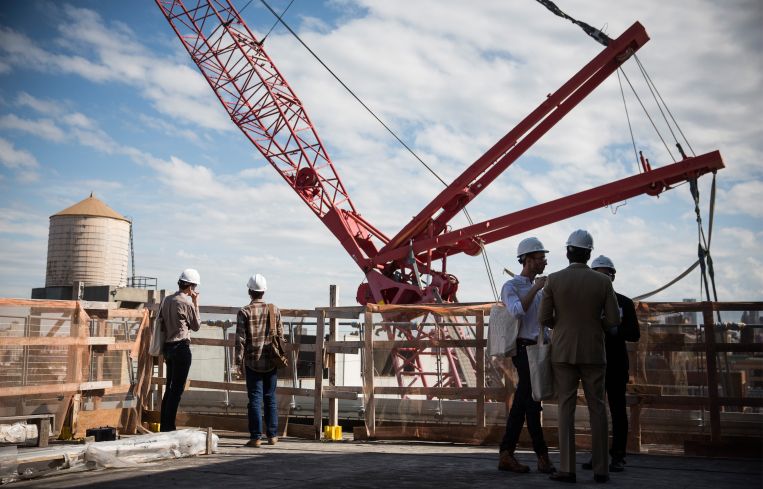With No 421a, New Housing Units to Drop by 25 Percent as Market Levels
By Terence Cullen October 25, 2016 12:01 am
reprints
The number of New York City housing units created annually is expected to drop by one quarter between 2016 and 2018, according to a new forecast by the New York Building Congress. Meanwhile, the construction industry is expected to sees its highest spending in history by the end of this year.
The release of the statistics comes nine months into the expiration of 421a, the state-sanctioned tax break that’s considered by the real estate industry as crucial to creating affordable housing.
About 25,000 housing units will be created in 2018, according to the Building Congress, which analyzes private data as well as information from the United State Census Bureau. That’s a 25 percent drop from the 31,300 expected to be built by the end of this year. About 27,000 units are slated to be constructed in 2017—a 16 percent drop from 2016.
While the figures are likely a result of the decrease in demand for units following the development boom, they also could be a sign of the things to come in a post-421a city.
“The residential demand in the city is softening,” said Richard Anderson, the president of the Building Congress. “And the impact of not having 421a is beginning to be felt.”
Louis Coletti, the head of the Building Trades Employers’ Association, said in an email he does not expecting the housing situation “to improve without an effective 421a program.”
The tax break expired on Jan. 15 after the Real Estate Board of New York and the Building Trades and Construction Council of Greater New York failed to reach an agreement on a prevailing wage—a mandate Gov. Andrew Cuomo implemented on 421a’s survival.
“We continue to work with all stakeholders to reach an agreement on 421a,” said a spokeswoman for the governor.
While there are enough projects planned for a steady flow of new housing over the next two years, Commercial Observer reported last week that New York City Department of Buildings applications for new projects in Manhattan and Brooklyn were down for the first half of this year due to the 421a expiration.
Residential construction spending is expected to drop accordingly over that period to $12.7 billion in 2018 from $13.4 billion this year, marking a 5 percent drop.
Overall construction spending is slated to hit $43.1 billion in 2016, the first time the number has reached north of $40 billion, according to the Building Congress. Spending, however, should drop slightly to $42.1 billion next year and back up to $42.3 billion in 2018. The pre-recession peak of $31.1 billion spent in 2007 comes out to $41.6 billion in 2016, when adjusted for inflation.
“We’re looking at 2016 as the peak year, and 2017 and 2018 as a slight…not-very-strong pull back,” Anderson said. “Things are starting to even out over the next two years. But there is no collapse.”
Nonresidential spending—on office buildings, entertainment venues and other commercial projects—is expected to hit $17 billion this year, according to the Building Congress. That’s a whopping 27 percent increase from last year’s $13.4 billion, the forecast indicates.
Anderson said commercial construction has been boosted by development at the World Trade Center, the Far West Side and One Vanderbilt—the planned 1.6-million-square-foot tower slated to abut Grand Central Terminal that broke ground last week.
“While the nonresidential sector has benefited from spending on hotels and hospitals, as well as colleges and universities, the big story is office construction, which is at its highest level in more than a quarter of a century,” Building Congress Chairman Richard Cavallaro said in a press release announcing the numbers.


